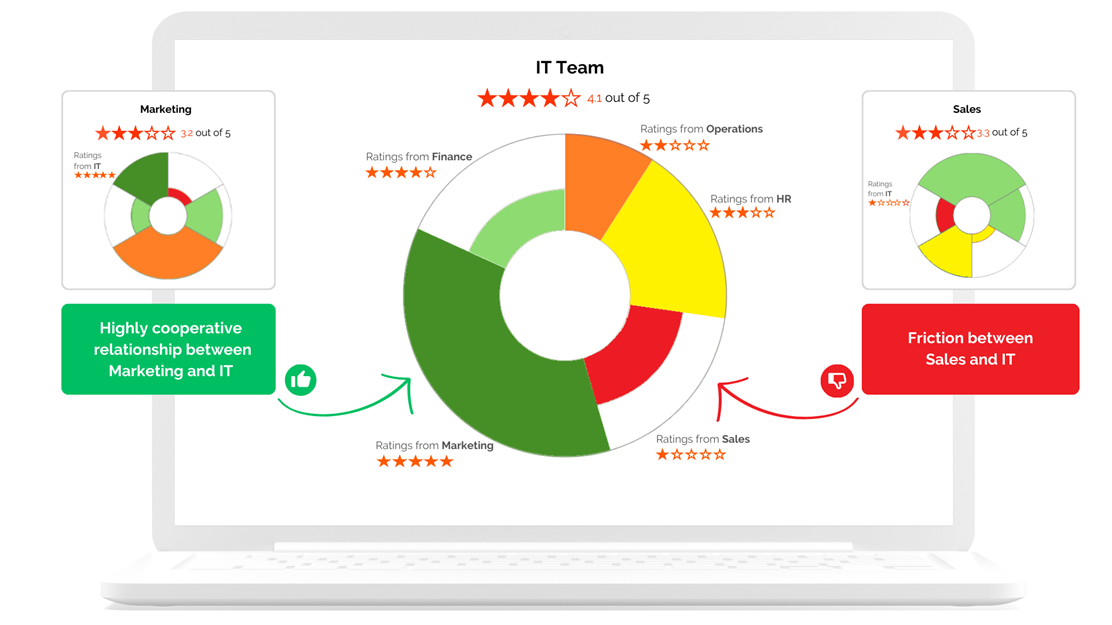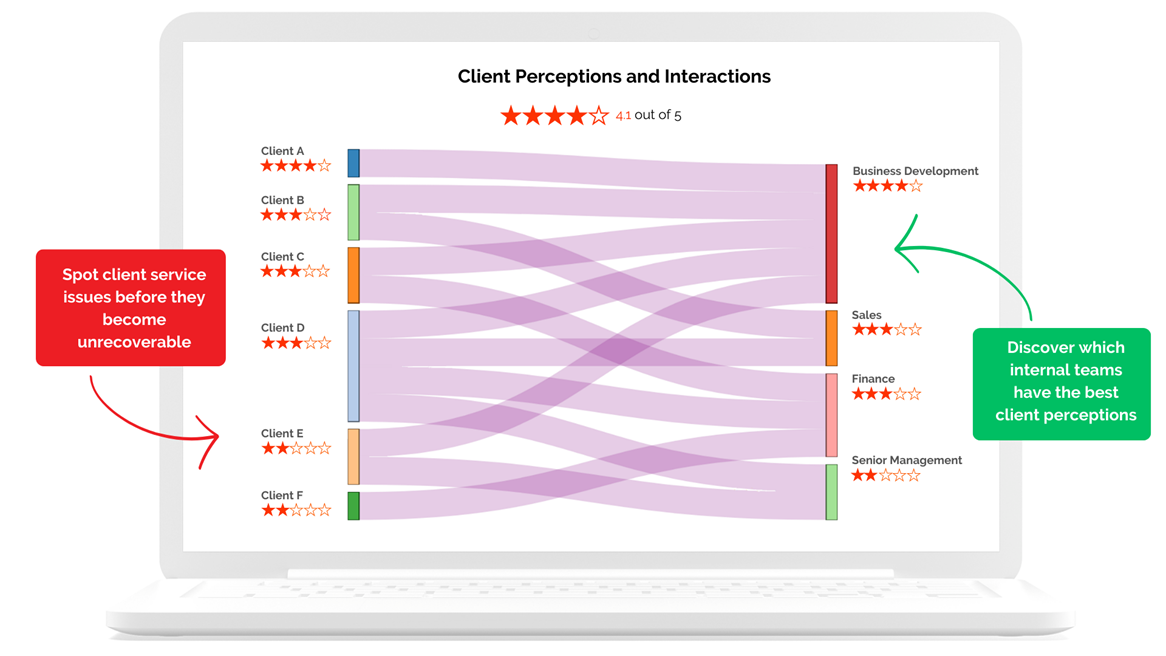What does being ‘future-ready’ mean?
October 1, 2024
“Building a high-perfoming team requires an effective understanding of your employees and their behavioral traits – how they think, how they interact with others, and what key skills are driving their success in your organization.”
Benchmark the traits of top performers in each function, unique to your organization.
In our last edition, we heard from Sven Houthuys and Tom Welchman, both Partners at McKinsey & Co, who shared their thoughts on the importance of empowering employees to perform to their best potential as a tool for future-proofing organizations. We know from research into working practices that only around ten per cent of teams are regarded as high-performing, which is having repercussive impacts on productivity, performance, agility and a capacity to embrace the changes that accompany rapidly shifting working dynamics.
Constructing a team that is high-performing – across all functions – is difficult, however. Doing so effectively, we suggest, requires an effective understanding of your employees and their behavioral traits – how they think, how they interact with others, and what key skills are driving their success in your organization.
There is value, therefore, in workplace feedback assessments, which enable organizations to pinpoint those characteristics and behaviors that maximise delivery and success. Of course, it is easy to identify technical skills that place individuals in good stead for a given role. In a Human Resources (HR) professional, for example, organizations might look particularly for candidates with strong data literacy and business acumen.
However, a deeper understanding of how behavioral traits shape efficiency, interaction, and delivery, offers even greater potential for driving up organizational performance. On the interpersonal side, these might include things like collaborativeness and integrity. Others might include adaptability and conscientiousness. With a knowledge of the skills that form the foundation of high-performance, organizations are handed the building blocks with which to construct a team with the agility, innovation and collaboration that the future of work demands.
The scope of these skills is not limited to encouraging high-performance in the teams of the present, though. It also has transformative potential for making the right recruitment decisions for the future. Benchmarking the behavioral traits proven to foster innovation, collaboration and productivity offers an opportunity to make recruitment choices that align with their ideal skill profiles. Candidates can be filtered by their accordance with the benchmark, ensuring that hiring is tailored precisely to skills needs, and contributes to the development of high-performance across the organization.
Identify which performance criteria need extra focus for each team in your organization, to optimize inter team cooperation and boost productivity
Another key feature in building a future-ready organization is a capacity to identify and overcome organizational silos. Internal friction between teams all-too-often proves a stifler of innovation and productivity – both of which are essential in preparing for, and then embracing, future changes to working practice. As time progresses – especially in the face of rapidly expanding global competition – gaps inevitably open up between organizations who deliver seamless, efficient service, and those who are bogged down in administrative process and needless complexity. Clients will naturally shift towards the former.
An effective system of workplace feedback also offers huge opportunities in overcoming these intra-organizational silos. In practice, this might involve encouraging teams to review the performances of each other on metrics such as project delivery, responsiveness, communication, collaboration and operational excellence. Identifying concerns as they arise enables issues between teams to be addressed before animosity or poor collaboration develops, which is critical in a future where operational agility defines success.
Within a large organization, senior leadership can then gauge precisely how teams are engaging with each other across the board. Take the below example:
Using workplace feedback mechanisms, the executive of an organization find that their Marketing and IT departments are working together effectively. Both groups rank each other highly across all indicators, particularly on operational excellence and project delivery. In contrast, however, the IT and Sales departments, though, appear not to be working together as well. They rate each other poorly, particularly on responsiveness and collaboration. This strain is having an impact on delivery between both teams, with a number of administrative delays and a failure to resolve issues quickly. Now aware of this lack of harmony, an organization can focus attention and investment on identifying and addressing the core issues causing friction between both teams.

Several months afterward, in a new intra-organizational feedback review, both teams now rate each other consistently higher. By investing first in reviewing team-to-team interaction, and then in remedying these issues, the organization has now tackled an internal silo previously stymieing collaboration, communication and thus productivity and innovation. It is these features that prove essential for building an organization that is not only fit for the future but also ready to embrace the changes and opportunities it brings. Adaptability and intra-organizational synergy are the cornerstones of future-readiness in the context of a rapid-evolving working environment where one mis-step could leave you trailing behind.
Extend feedback to board level, empowering the top team to determine what is stopping them from achieving optimal performance across every stakeholder group
Beyond relationships between each team within an organization, it is also key for the senior executive leadership – the board – to work at the highest level. An efficient and high-performing executive can have extremely valuable repercussions for the organization itself, for existing stakeholders, and for future investors.
Board assessments exist in a number of forms, but all-too-often they are hampered by several issues. First, they tend to be one-off exercises evaluating board dynamics. These are easy to forget quickly, and often too expensive – in both board time and fees – to repeat regularly.
These costs, coupled with complexities in scaling assessments to other senior teams in an organization, prevent assessments from optimizing peformance across the length and breadth of a business.
They are also often limited to providing static snapshots of board dynamics, influenced by who was or was not there, the current state of the organization, and the current composition of its executive team. Its failure to track and reflect change and consider wider trends means its long-term value is limited. Lessons taught might be valuable in and of themselves, but they remain impersonal and thus less likely to have a truly transformative impact.
Being able to identify and understand characteristics, approaches and expectations within a board environment on an ongoing and dynamic level can have this impact, though.
Working in the same way as the individual and team feedback mechanisms discussed earlier, building a behavioral profile – both of yourself and the other members of your team – enables a proper consideration of similarities and differences within a team. This awareness of the characteristics, thinking styles, working styles and broader expectations of your wider team can prove key in facilitating smoother, more efficient and more productive decision-making and delivery.
In fact, a failure to have an understanding of these can often be the spark behind conflict in an executive environment.
Given its position as the place in which the most impactful organizational decisions are made, an ability to enhance collaboration and performance at board level is essential.
Empower clients and stakeholders to rate every interaction that causes issues throughout the complex web of relationships internationally, unearthing problems before they become critical
At the heart of a business’ success is winning and maintaining clients. Continuing to do so as work evolves can become more difficult, however, particularly as client expectations continue to grow. Through proper avenues of communication and feedback, though, organizations can empower their clients to highlight the strengths and weaknesses of your business to get ahead of issues before they become unrecoverable.
Through a system of feedback, organizations can pre-empt the churn that could threaten the long term success of their enterprise. Asking clients to rate the quality of their interactions with different internal departments can reveal which areas need improvement and which are excelling, providing a clear roadmap for enhancing service quality.
This can also extend to the senior executive of an organization. Encouraging external shareholders, investors and suppliers to review performance ensures that any areas in which concerns are beginning to arise can be immediately identified and then appropriately addressed.
It can form part of a holistic approach to raising both the floor and ceiling of your organizational capacity, encouraging a consistent cycle of evolution and growth that ensures organizations remain at the top of their game while competition around them continues to grow. Benchmarking the key client and stakeholder-facing traits of your best teams, as done with the traits of your best employees, offers an opportunity to standardise high-quality delivery.

Perhaps even more critical in future-proofing your organization, leveraging client and stakeholder feedback can become a powerful tool for winning new business. By showcasing to prospective clients and investors the ways in which you actively manage and continuously optimize service levels, you can position your organization as a proactive and reliable partner. This not only builds trust but also demonstrates your ability to deliver consistent, high-quality results on a global scale – giving you a competitive edge in securing new opportunities.
In today’s rapidly changing landscape, organizations must address multiple challenges to thrive and be future-ready. Beyond adopting new technologies, success lies in fostering high-performance teams – at all levels of an organization, dismantling internal silos, and proactively engaging with client and stakeholder feedback. By building an understanding of what drives employee success, encouraging cross-functional collaboration, and anticipating client needs, companies can construct a resilient foundation of agility, innovation, collaboration and productivity. These strategic approaches ensure that businesses are not only prepared to adapt but are positioned to embrace the full scope of changes that the future will bring.

